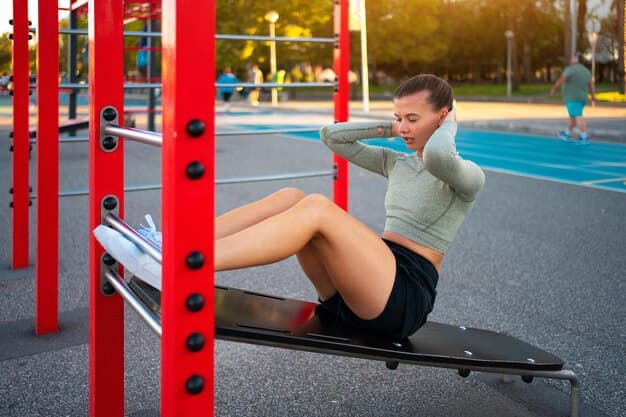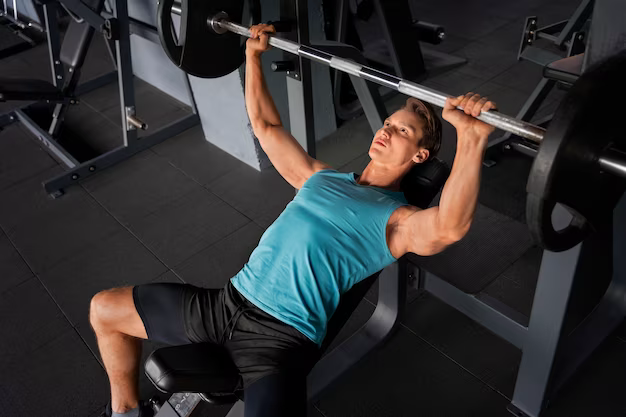Regular gym enthusiasts are no strangers to the importance of the bench press. This much-loved exercise is essential for shaping the upper body and building strength. However, deciding on the optimal incline bench angle often sparks intense debates among fitness buffs. The ongoing dispute between proponents of the 30-degree and 45-degree angles can be as intense as any pre-workout regimen.
So, let’s delve into the world of fitness science and safety protocols to address this topic and bring closure to this dilemma.
Incline Press: More Than Just a Chest Exercise
The incline press doesn’t just sculpt your chest – it’s a comprehensive upper body exercise that targets several muscle groups. Modifying the incline angle of the bench emphasizes different muscles, highlighting its versatility as a key weapon in your fitness repertoire.
Utilizing the incline bench press comes with varied angles, each with its distinct benefits:
- 30-Degree Incline: This particular angle spotlights the upper pectoral muscles and engrosses the anterior deltoids;
- 45-Degree Incline: This angle offers a more balanced approach. It stimulates both the upper and lower pectoral muscles while limiting anterior deltoid involvement.
Choosing between a 30-degree and a 45-degree bench incline goes beyond personal inclination. It’s rooted in science.
A research study led by Jakob D Lauver et al. explored muscle activation at different bench angles. The study revealed:
- Upper Pectoralis Activation: No considerable difference in total concentric contraction. However, both 30° and 45° demonstrated greater activation during the 26-50% contraction period compared to flat (horizontal) and -15° bench angles;
- Lower Pectoralis Activation: Notably more activation during flat, 30°, and -15° bench conditions than the 45° incline angle for the entire concentric contraction.
Based on the study, here is the bench angle activation during the 26-50% contraction duration and the whole concentric contraction:
| Bench Angle | Activation During 26-50% Contraction Duration | Activation During Whole Concentric Contraction |
|---|---|---|
| 30° | 122.5 ± 10.1% MVIC | 86.6 ± 4.8% MVIC |
| 45° | 124 ± 9.1% MVIC | 71.9 ± 4.5% MVIC |
| Horizontal | 98.2 ± 5.4% MVIC | 100.1 ± 5.2% MVIC |
| -15° | 96.1 ± 5.5% MVIC | 100.4 ± 5.7% MVIC |
Demystifying the Science of Muscle Activation
Unveiling the science behind muscle activation can feel like decoding an enigma. However, a clear understanding of how different muscle groups respond to varying bench incline angles is crucial for maximizing the effectiveness of your workout.
Targeting Key Muscle Groups at Different Angles
30-Degree Incline:
With a 30-degree incline, the upper segment of your pectoralis major (the large chest muscle), also known as PMUP, exhibits peak electrical muscle activity, as recorded by electromyography (EMG). Picture this angle as the perfect equilibrium for upper chest fitness – an optimal blend of efficacy and comfort. At this angle, engagement of the anterior deltoids (shoulder muscles, AD) is also pronounced, although not as intensified as on higher inclines.
45-Degree Incline:
Regard the 45-degree incline as the multipurpose tool of bench presses. It maintains muscle engagement versatility, without specifically amplifying the upper or lower pecs. Interestingly, this angle doesn’t involve the anterior deltoids as much, making it a chest-centric exercise.
EMG Activity Across Different Bench Angles
| Bench Angle | Upper Pectoralis (PMUP) | Middle Pectoralis (PMMP) | Lower Pectoralis (PMLP) | Anterior Deltoid (AD) | Triceps Brachii (TB) |
|---|---|---|---|---|---|
| 30° | Peak | Moderate | Moderate | Moderate | Uniform across angles |
| 45° | Moderate | Moderate | Reduced | Reduced | Uniform across angles |
| Horizontal | Moderate | High | High | Similar to 30° | Uniform across angles |
| 60° | Reduced | Reduced | Reduced | Highest | Uniform across angles |
Surprisingly, the triceps brachii muscle exhibited comparable EMG activity at all bench angles. Quite like that reliable friend who’s always there for you, regardless of the situation!

Essential Safety Measures
Exercising caution while lifting weights is as crucial as understanding what you’re doing before diving headfirst into a new relationship. Especially when experimenting with different bench angles, prioritizing safety is paramount. Here are some tips to help you out:
Upholding Correct Form
Maintaining proper form while exercising is akin to following a sacred gym commandment. Erring might cause you to compromise your gains or worse, put you at risk of injury. Whether it’s a 30-degree or a 45-degree incline, adhering to correct posture ensures you target the right muscles and minimize injury risk.
Gradual Progression for Beginners
Instantly opting for heavy weights might seem tempting, but remember, Rome wasn’t built in a day. If you’re new to the incline bench press, start with lighter weights and progressively increase the intensity as your strength, endurance, and confidence evolve.
Seek Spotter Assistance
Think of spotters like your gym’s guardian angels, always there to lend a helping hand when you’re challenging your limits. When lifting heavy weights, a spotter provides an additional layer of safety and boosts your morale.
Recognize Individual Comfort and Variability
Every individual’s capacity and comfort level with exercise vary. Thus, it’s essential to be mindful of your body’s limitations and adjust the incline angle and weights accordingly. Always pay attention to your body’s signals; it’s your primary guide!
Incline Bench Press Safety Checklist
| Consideration | Why It’s Important |
|---|---|
| Proper Form | Reduces injury risk, ensures accurate muscle targeting |
| Gradual Progression | Facilitates body adaptation, avoids overexertion |
| Spotter Assistance | Enhances safety and encourages performance |
| Individual Variability & Comfort | Tailors exercises to individual needs, minimizes discomfort |
Pro Tip: Warming up before hitting the bench is as essential as the exercise itself. Cold muscles are less responsive, so a thorough warm-up prepares your muscles and joints for the workout, promoting efficacy and safety.
Conclusion
In conclusion, the incline bench press, with varying angles, is a powerful tool in muscle sculpting and strength-building workouts. Understanding the science behind muscle activation, maintaining proper form, progressing gradually, and acknowledging individual comfort levels are essential for maximizing benefits and minimizing injury risk. Additionally, striking a balance between cardiovascular fitness and strength training, coupled with suitable recovery strategies, can significantly augment your overall fitness journey.
As we explore the nuances of perfecting the incline bench angle for your workout, it’s crucial to expand our horizons and consider complementary exercises that can enhance your upper body transformation. One such aspect that often garners attention is the elusive “armpit fat” and the exercises aimed at targeting it.
